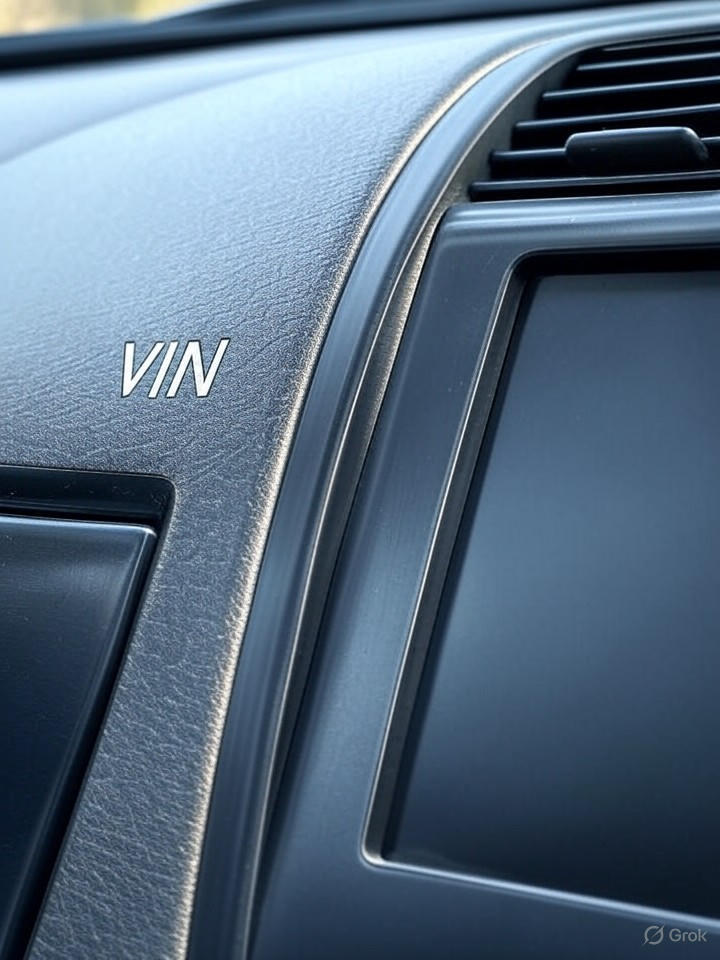In the intricate world of automotive manufacturing and regulation, few elements are as pivotal as the Vehicle Identification Number, or VIN—a 17-character code that serves as a vehicle’s unique DNA. Assigned at the factory, this alphanumeric string encapsulates a wealth of data, from the manufacturer’s identity to the model’s specifications, production year, and even the assembly plant. For industry insiders, understanding the VIN isn’t just about decoding a sequence; it’s about unlocking insights into supply chains, safety compliance, and market dynamics that drive the global auto sector.
The VIN’s origins trace back to the 1950s, but it wasn’t until 1981 that the National Highway Traffic Safety Administration standardized it in the U.S., mandating the 17-digit format to align with international norms set by the International Organization for Standardization (ISO). This shift ensured consistency across borders, aiding everything from trade to theft prevention. Today, every vehicle rolling off assembly lines worldwide bears this code, etched into multiple locations like the dashboard, door frame, and engine block to deter tampering.
The Anatomy of a VIN: Breaking Down the Code
At its core, the VIN is divided into three sections: the World Manufacturer Identifier (WMI), the Vehicle Descriptor Section (VDS), and the Vehicle Identifier Section (VIS). The first three characters denote the country of origin and manufacturer—for instance, “1G” signals a General Motors vehicle built in the U.S. Digits four through nine reveal the model, body type, engine, and safety features, while the final eight include a check digit for validation and a serial number unique to the vehicle. As detailed in resources from NHTSA’s VIN decoder, this structure allows precise identification, crucial for recalls and warranty claims.
Beyond basic decoding, the VIN’s check digit—position nine—employs a mathematical formula to verify authenticity, a safeguard against fraud that’s become indispensable in an era of rising vehicle cloning. Automotive experts often turn to tools like those on Edmunds for quick breakdowns, revealing how a single code can expose a car’s history, including any flood damage or salvage status.
Industry Applications: From Safety to Supply Chain
In practice, VINs power a vast ecosystem. Insurers rely on them to assess risk, while law enforcement uses them to track stolen vehicles—over 1 million cars are pilfered annually in the U.S. alone, per FBI data. For manufacturers, VINs facilitate targeted recalls; Tesla, for example, recently updated its VIN format to distinguish between LFP and non-LFP batteries in 2024 models, as noted in posts on X, signaling a shift toward transparency in electric vehicle production.
This evolution ties into broader trends, such as Nigeria’s National Vehicle Registry Policy, which integrates VIN data across agencies to combat smuggling, according to recent X discussions. Similarly, innovations like digital registration plates with embedded QR codes, highlighted in automotive tech updates, enhance VIN security by linking physical tags to digital verification systems.
Emerging Challenges and Innovations in VIN Usage
Yet, challenges persist. Cybersecurity threats loom, with historical vulnerabilities like those in older Toyota immobilizers—where the VIN doubled as a key code—exposing risks, as shared in X posts from industry observers. Regulators are responding; the U.S. push for electric vehicle tax credit info via VIN decoders, as per NHTSA’s vPIC tool, underscores how these numbers now influence policy and incentives.
Looking ahead, VINs are evolving with autonomous and connected vehicles. Proposals for blockchain-integrated VINs could revolutionize provenance tracking, reducing fraud in used-car markets. As Consumer Reports explains, decoding a VIN can reveal manufacturing origins, like a Honda built in Mexico, informing supply chain strategies amid geopolitical shifts.
The Future Role of VINs in a Digital Auto Era
For insiders, mastering VIN intricacies means anticipating disruptions. With global production exceeding 90 million vehicles yearly, per OICA stats, these codes are linchpins in data analytics, enabling predictive maintenance and personalized services. Recent news from Kelley Blue Book emphasizes how VINs disclose transmission types and more, aiding fleet managers in efficiency gains.
Ultimately, the VIN transcends mere identification—it’s a gateway to the automotive industry’s pulse. As digital twins and AI integrate with vehicle data, expect VINs to anchor innovations, ensuring traceability in an increasingly complex market. Industry leaders who leverage decoders from sources like Mopar or AutoZone position themselves at the forefront, turning codes into competitive advantages.




 WebProNews is an iEntry Publication
WebProNews is an iEntry Publication